San Lorenzo district in Rome, was born in the period between 1884 and 1888, at the time of the great building fever, which pervaded the city after the proclamation of Rome as the capital of Italy. In 1889 an economic crisis meant that the buildings begun with other ambitions were finished badly and destined for a class of public housing, which is why San Lorenzo is not one of the most beautiful neighborhoods in Rome: but its proximity to the University city of La Sapienza, has made San Lorenzo a lively district, promoter of many creative and artistic initiatives and where a young context and popular origin happily coexist, with the presence of ancient shops alongside trendy venues.
During the Second World War San Lorenzo district suffered a heavy bombing, it was 19 July 1943 and the allies hit the Scalo San Lorenzo, causing 717 victims and devastating several buildings. The Italian singer Francesco De Gregori dedicated a song to this event, entitled San Lorenzo. Since the reconstruction, the neighborhood has transformed into what we know today, a lively district that alongside popular life welcomes a young population and an intercultural texture.
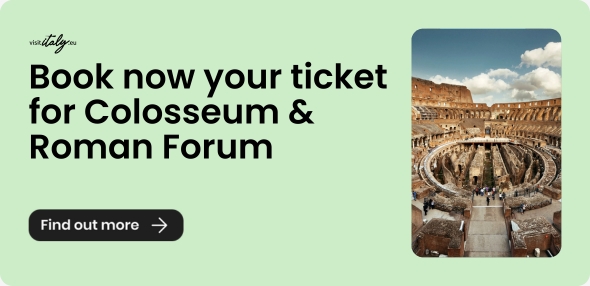
San Lorenzo district in Rome: 7 things to do
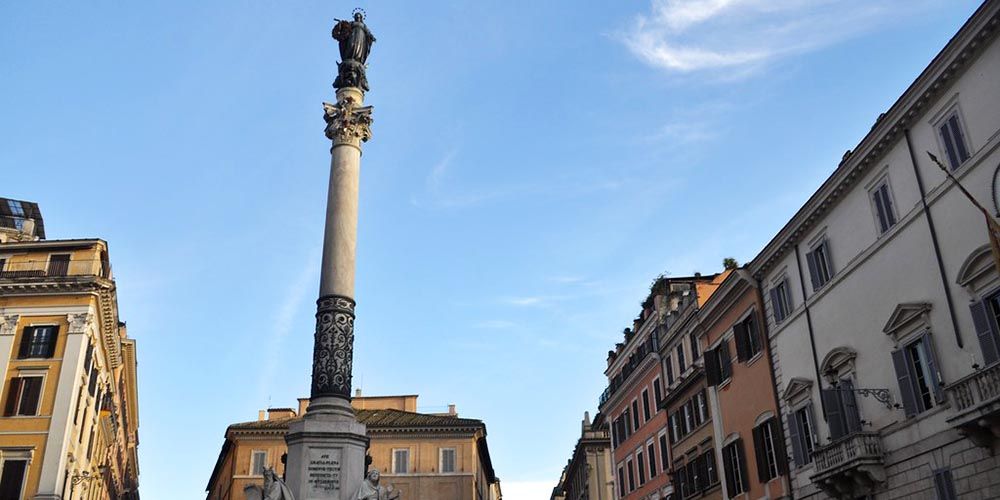
Together with the neighborhoods of Pigneto, Testaccio and Trastevere, San Lorenzo district in Rome is one of the most frequented by nightlife, where you can breathe a young, intercultural and light-hearted atmosphere. In this neighborhood which is located a short distance from the central Termini station and the historic university city of La Sapienza, there is no shortage of things to do even during the day. It is a district of working-class origins, which since its formation has undergone an incredible transformation, becoming one of the most popular neighborhoods in the capital.
Ideal for an aperitif in the evening in the popular Piazza dell'Immacolata, around which there are bistros, bookshops, characteristic bars, and cinemas. Rather than a day visit to discover the street art murals, the MoRa, the first museum of recycled art. Then, moving away a little from the beating heart of the neighborhood, we will visit the monumental cemetery of Verano, the Basilica of San Lorenzo fuori le mura, one of the 7 Basilicas of Rome, destinations of the Jubilee pilgrimage and the plaster cast gallery of La Sapienza University. Continue reading and come and discover what to do in the San Lorenzo district in Rome.
How to get to the San Lorenzo district in Rome
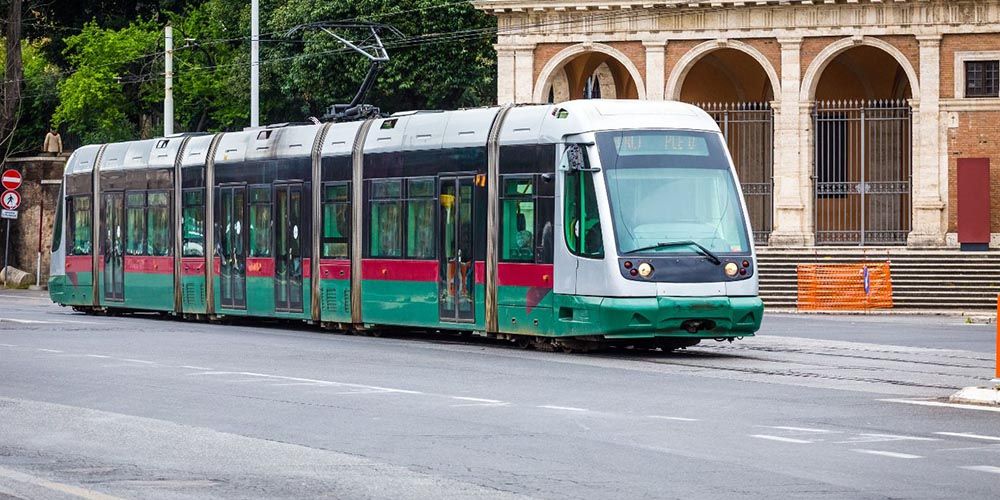
Getting to the San Lorenzo district in Rome is very simple. If you are at Termini Station, the central station of Rome, you are spoiled for choice. You can conveniently take public transport, in particular bus number 71 at Piazzale Tiburtino and get off at the Tiburtina/Marrucini stop. A very convenient option, if you are on holiday in Rome, is to book the Visit Rome Pass, where together with the entrance to many attractions, you will also have an unlimited ticket for getting on and off public transport included.
If you want an alternative to public transport, we recommend renting an electric bike, with which you can comfortably reach the San Lorenzo district in Rome and continue the trip to the historic center of the capital and visits to other neighborhoods.
Discover more about Visit Rome Pass7. Piazza dell’Immacolata
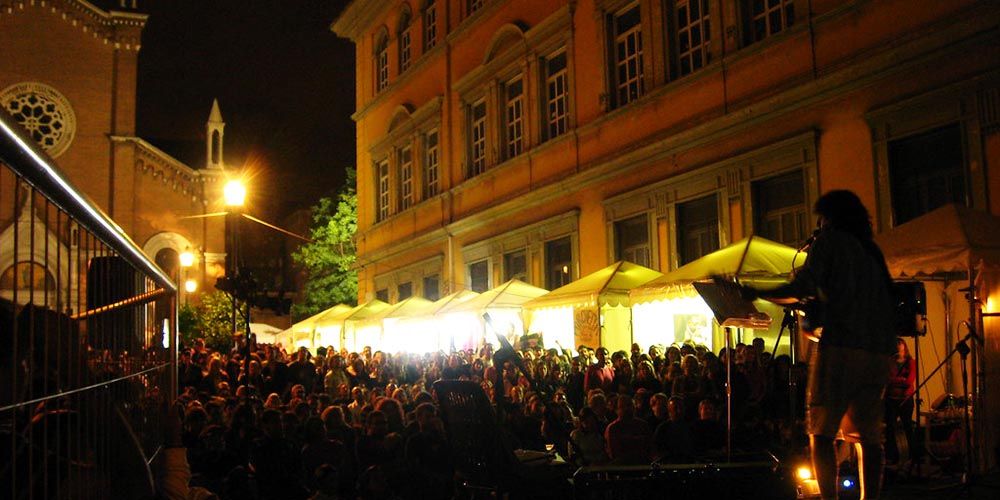
Piazza dell'Immacolata is the historic central square of San Lorenzo district, it is a pedestrian square, overlooked by bars with tables, a cinema, a café bookshop and in the evening, it is filled with people who want to have fun and have a chat outside 'open.
It is a place for meeting, socializing, and relating. Leonardo Crudi, a young artist who lives and works in the neighborhood, created in this place Fantasia in piazza, a street artwork, thanks to a call from the Lazio region. A work of art designed to reflect the character of the district, made up of geometries and colors that design playful paths, stimulating the imagination of adults and children.
6. Street art
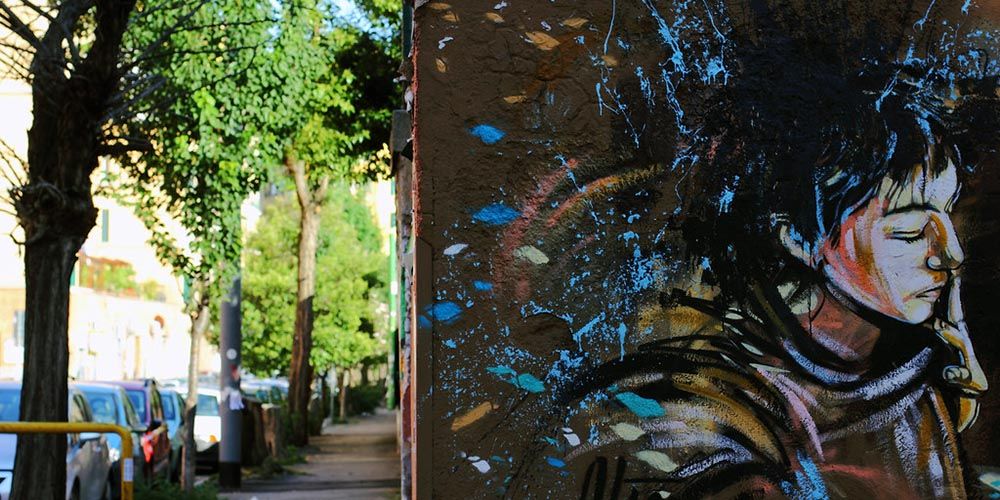
Urban art, street art, animates the San Lorenzo district and clearly shows how this young district is a hotbed of creativity, initiator of new artistic trends. With street art graffiti, San Lorenzo remembers its past, such as the bombing of 1943, recounts its present as a multi-ethnic community and looks to the future, hoping for a green world on two wheels. In via dei Lucerni, a tribute to the multi-ethnic San Lorenzo with the mural: Luogo comune. In via dei Peligni the Pact of Europe is created on an entire façade of a 5-storey building. Also, on via dei Peligni, adjacent to the playground you will find the two-wheeled mural, a child on a bike looks at you from above.
On the wall torn apart by the bombs of 1943 we find the large guerilla Spam mural, which makes it an interesting redevelopment, making it a piece of contemporary art, which integrates historical memory and the present. Finally, in via dei Sardi, in front of the Faculty of Psychology you will find the mural against feminicide, which remembers and denounces violence against women, a long line of women in white holding hands to create a chain of union and strength, like warning for the future.
5. The MoRa: first museum of recycled art
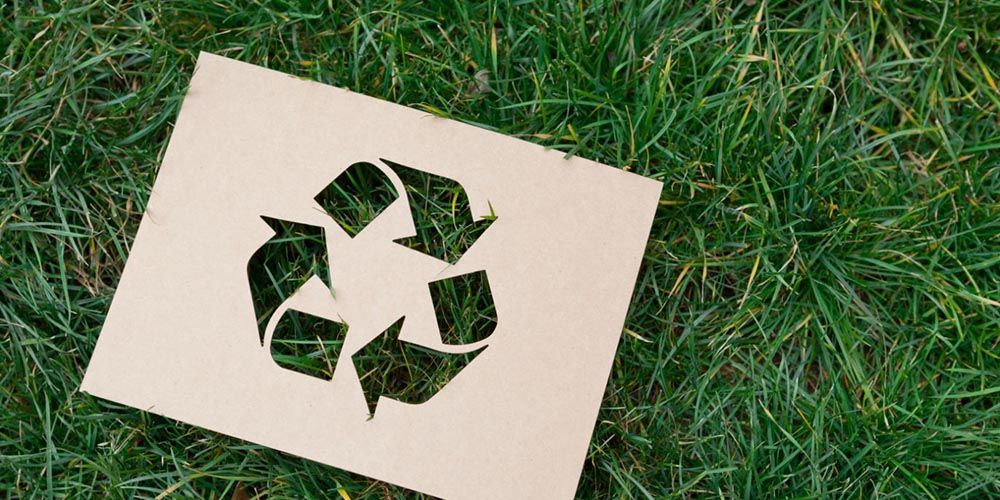
Open from 8 December 2018, in via Nuoro, you will find the first Museum of recycled art. Curated by the Anna Tomasetta Cultural Association – Di che stoffa sei? It is a place where various works by artists who use the reuse/recycling of objects to transform them into fashion, clothing and furnishing objects are exhibited.
The MoRa Museum, founded by RAI journalist Mariaceleste de Martino, expresses all the desire to combat waste, in the idea that anything can become something else, if there is commitment and will. Before going to the Museum, it is best to check the opening hours.
4. Basilica of San Lorenzo Fuori le Mura
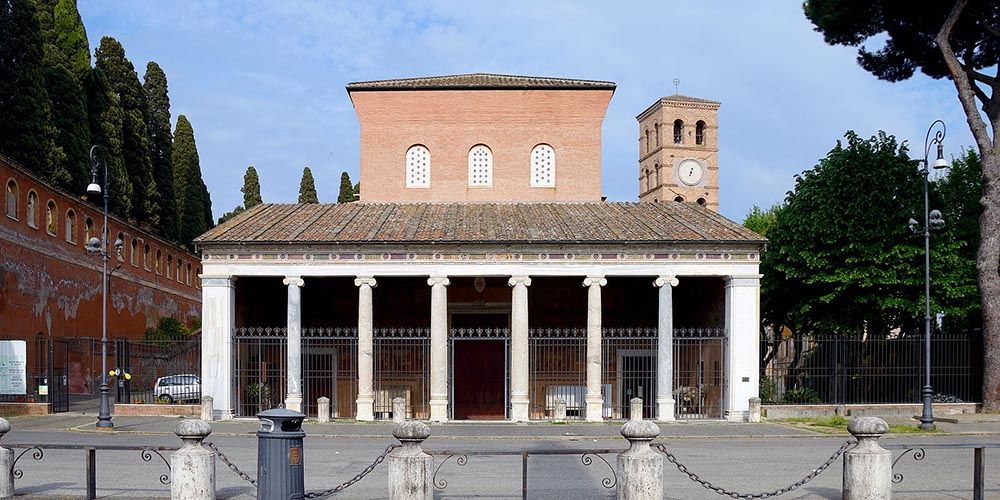
The Basilica of San Lorenzo fuori le mura, also known as San Lorenzo al Verano, given its proximity to the monumental cemetery of Verano, is one of the 7 Basilicas of Rome which is part of the ancient pilgrimage practiced by the faithful for the Jubilee, since from the Middle Ages. They are the oldest and most important churches in the city of Rome.
The works began in the 6th century and what we observe today is the result of the fusion of two distinct churches, built around the tomb of San Lorenzo. The Basilica is in front of a large square, the facade was rebuilt after the bombings of '43, the colonnaded entrance portico has medieval capitals. The simplicity of the facade will ensure that you marvel at the grandeur of the interior. The Basilica is located near the monumental cemetery of Verano, we therefore suggest you continue your visit there.
3. Verano monumental cemetery

The Verano monumental cemetery is considered an open-air museum. Here you will find the tombs of famous Italian entertainment celebrities, such as the actors Vittorio Gassman and Alberto Sordi, Bud Spencer and the actress Monica Vitti, but also illustrious figures from Italian politics and the literary world, such as Natalia Ginzburg and Alberto Moravia and the pedagogue Maria Montessori. The cemetery covers an area of 83 hectares and there are more than three hundred tombs of historical-artistic interest scattered throughout the Verano Park, we must therefore consider it a place of great artistic and cultural value that tells the story of the city and beyond.
Once you have crossed the monumental entrance on the avenue you come across the monument dedicated to Goffredo Mameli, counted among the most famous figures of the Italian Risorgimento. We recommend that you equip yourself with a valid map to continue your walk or choose a route accompanied by a tourist guide. Among others, it is important not to miss: the Sala Mater Admirabilis, the military shrine, the Israelite temple, the Egyptian temple, and the tombs of the illustrious and entertainment figures who have made Italy famous.
2. Museum of classical art of La Sapienza University of Rome
The last stop of our tour in the San Lorenzo district of Rome is the Museum of Classical Art of the University City La Sapienza of Rome, one of the oldest universities in Italy. Have you ever visited a plaster cast gallery? You will discover an unexpected and interesting place. There are various rooms where the plaster casts of Greek sculptures from the archaic period to Hellenism are preserved.
The Museum has a collection of 1200 plaster casts, displayed in chronological order. The peculiarity of this place with free entry is that it also functions as a study room, in fact among the rooms, sculptures and temporary exhibitions, wooden tables and chairs are arranged for those who wish to study, take notes, make sketches, or simply rest. At the end of your itinerary for the San Lorenzo district in Rome, it is the ideal place to take a break, surrounded by culture and reflect on the new destinations you want to visit in the city.
1. San Lorenzo district in Rome: nightlife
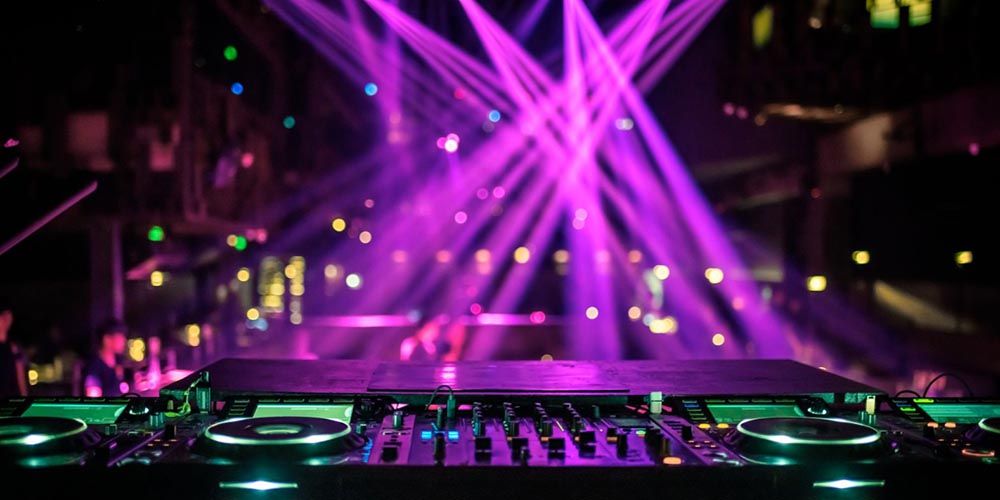
Given its quality as a young and cosmopolitan neighborhood, San Lorenzo offers its best starting from 7 in the evening. San Lorenzo is in fact one of the symbolic districts of Roman nightlife. After your day's visit, stay in the neighborhood, take advantage of one of the many places offering an aperitif or one of the many pizzerias and trattorias where you can enjoy a typical Roman pizza accompanied by a beer and pleasantly await the awakening of the nightlife. After dinner you can choose from the many nightclubs offering live music, a disco or a pub. Rome at night offers many opportunities. This was our seventh and final tip on what to do in the San Lorenzo district in Rome.
About the author
Written on 12/02/2024


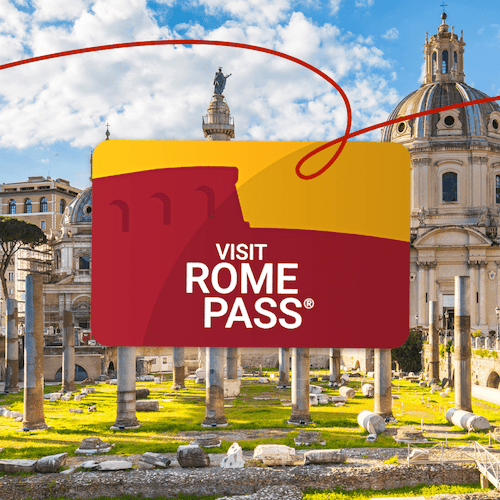
Chiarastella Campanelli
San Lorenzo district in Rome hides many surprises. Find out the liveliest neighborhood of the capital, between street art, nightlife and interculture